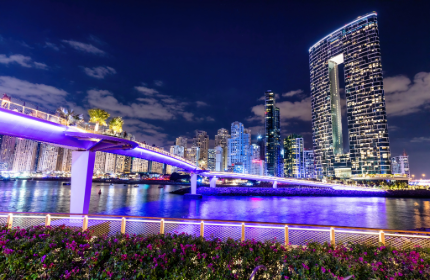Strategies for Successful Commercial High-rise Sales and Marketing
Strategies for Successful Commercial High-rise Sales and Marketing
Understanding the Target Market: Key Factors for Commercial High-rise Sales and Marketing
In the world of commercial real estate, understanding the target market is crucial for successful sales and marketing of high-rise properties. Key factors to consider when identifying the target market include demographics, industry trends, and location preferences.

Buy/sell, rent/lease residential &
commercials real estate properties.
Demographics play a significant role in determining the target market for commercial high-rise sales. Factors such as age, income level, and occupation can help identify potential buyers or tenants. For example, a high-rise located in a bustling financial district may attract professionals working in the finance industry, while a high-rise near a university campus may appeal to students or young professionals.
Industry trends also play a vital role in understanding the target market. Keeping up with the latest developments in various industries can help identify potential buyers or tenants. For instance, if there is a growing demand for co-working spaces, marketing a high-rise as a hub for innovative startups and freelancers can be an effective strategy.
Location preferences are another crucial factor to consider. Understanding the preferences of potential buyers or tenants in terms of proximity to transportation, amenities, and other businesses can help tailor the marketing efforts. For example, if the target market values convenience and accessibility, highlighting the high-rise’s proximity to public transportation and nearby restaurants or shops can be a compelling selling point.
Developing a Comprehensive Marketing Plan: Essential Steps for Successful Commercial High-rise Sales
Developing a comprehensive marketing plan is essential for successful commercial high-rise sales. A well-crafted plan should include market research, branding, targeted advertising, and networking strategies.
Market research is the foundation of a successful marketing plan. It involves analyzing the competition, understanding market trends, and identifying the unique selling points of the high-rise. By conducting thorough market research, developers and marketers can gain insights into the demand for high-rise properties in a specific area and tailor their marketing efforts accordingly.
Branding is another crucial aspect of a comprehensive marketing plan. Creating a strong brand identity for the high-rise can differentiate it from competitors and attract potential buyers or tenants. This includes developing a compelling logo, tagline, and visual identity that resonates with the target market. Consistency in branding across all marketing channels helps build trust and recognition.
Targeted advertising is a key strategy for reaching the right audience. Utilizing digital platforms such as social media, search engine marketing, and targeted email campaigns can effectively reach potential buyers or tenants. By leveraging data analytics and demographic targeting, marketers can ensure their advertisements are seen by the most relevant audience.
Networking is an often overlooked but powerful strategy for successful commercial high-rise sales. Building relationships with local businesses, industry professionals, and potential buyers or tenants can lead to valuable referrals and partnerships. Attending industry events, joining professional organizations, and hosting networking events can help establish credibility and generate leads.
Leveraging Technology and Digital Platforms: Effective Strategies for Commercial High-rise Sales and Marketing
In today’s digital age, leveraging technology and digital platforms is essential for successful commercial high-rise sales and marketing. Effective strategies include virtual tours, 3D renderings, social media marketing, and online listing platforms.
Virtual tours and 3D renderings allow potential buyers or tenants to experience the high-rise without physically visiting the property. This technology provides a realistic and immersive experience, enabling individuals to visualize themselves in the space. By incorporating virtual tours and 3D renderings into marketing materials and websites, developers and marketers can showcase the high-rise’s unique features and attract a wider audience.
Social media marketing is a powerful tool for reaching and engaging with potential buyers or tenants. Platforms such as Facebook, Instagram, and LinkedIn offer targeted advertising options and allow for direct communication with the audience. By creating compelling content, sharing updates about the high-rise’s construction progress, and showcasing amenities or events, marketers can build excitement and generate leads.
Online listing platforms are a valuable resource for commercial high-rise sales and marketing. Websites such as LoopNet, CoStar, and Zillow Commercial provide a platform to showcase the property to a wide audience of potential buyers or tenants. Optimizing listings with high-quality photos, detailed descriptions, and accurate pricing information can attract interested parties and increase visibility.
Building Strong Relationships: Key Tactics for Successful Commercial High-rise Sales and Marketing
Building strong relationships is a key tactic for successful commercial high-rise sales and marketing. By fostering connections with potential buyers or tenants, industry professionals, and local businesses, developers and marketers can establish trust, generate referrals, and create a positive reputation.
One effective tactic for building relationships is hosting events or open houses. Inviting potential buyers or tenants, industry professionals, and local businesses to tour the high-rise, attend informational sessions, or network can create a sense of community and engagement. These events provide an opportunity to showcase the high-rise’s unique features and build personal connections.
Another tactic is providing exceptional customer service throughout the sales process. Responding promptly to inquiries, addressing concerns, and providing personalized attention can leave a lasting impression on potential buyers or tenants. By going above and beyond to meet their needs, developers and marketers can build trust and loyalty.
Collaborating with local businesses and industry professionals is another effective strategy for building relationships. By partnering with nearby restaurants, retailers, or service providers, developers and marketers can offer exclusive discounts or incentives to potential buyers or tenants. This collaboration not only adds value to the high-rise but also strengthens ties with the local community.
Lastly, maintaining regular communication with past clients is crucial for building long-term relationships. Sending newsletters, updates on market trends, and invitations to exclusive events can keep the high-rise top of mind and encourage referrals. By staying connected with past clients, developers and marketers can leverage their network and generate new leads.
In conclusion, successful commercial high-rise sales and marketing require a deep understanding of the target market, a comprehensive marketing plan, leveraging technology and digital platforms, and building strong relationships. By implementing these strategies, developers and marketers can effectively promote high-rise properties, attract potential buyers or tenants, and achieve success in the competitive commercial real estate market.

